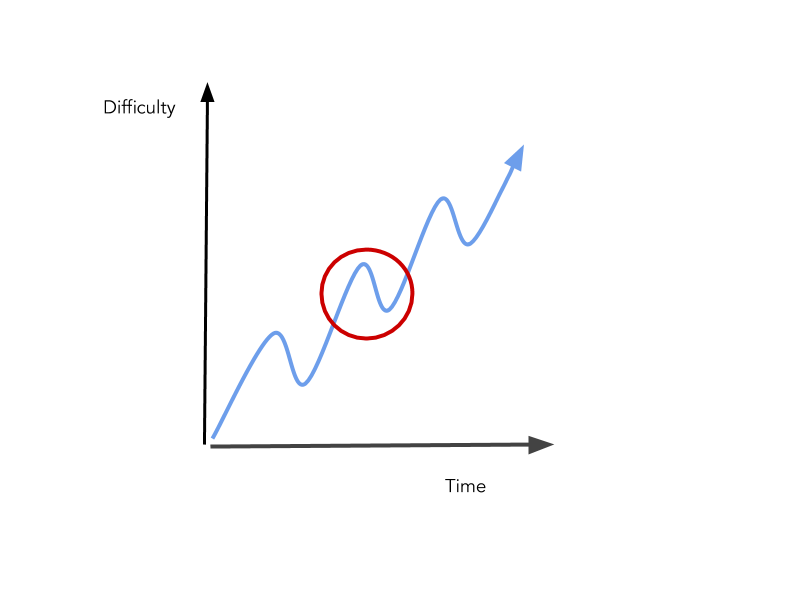Difficulty Curves in Games
Lessons for Product Builders
A young girl wakes up in a daze.
“Where is everyone?”
She walks out of her room and searches her house. Her family is missing. She can hear some noise outside. She can also smell smoke. She picks up her dada’s old wooden sword and walks out of her house. The entire village is burning. A large shadow in the distance is moving towards her.
She gasps! It is a rat monster from the forest. What is it doing here? The rat monster attacks. She fends off the first attack. Her entire right arm is blazing. She attacks back. She connects. The monster staggers back and evaporates. She turns around to find two more rat monsters staring her down. She paries and moves around to fight one of them at a time, not letting both monsters attack her at once. She is hurt. But she destroys both the monsters. Her wooden sword is broken.
She finds a healing potion next to the first rat monster. She drinks it and is healed. She finds a satchel next to the other rat monsters and opens it. It is much larger on the inside. Her hand touches something metallic. She draws it out. It is a sword. A proper steel sword. The next rat monster won’t stand a chance.
…
A lot of adventure games start with a similar storyline.
Hero finds a weapon
Hero finds the first enemy
With some difficulty, hero wins
Hero meets more enemies
Hero loses health
Hero heals
Hero upgrades weapon
Hero finds it easier to defeat enemies
Stronger enemies emerge
And the cycle continues. More evolved stories and games will involve a quest-giver - a mentor who helps our hero on her journey.
If one were to plot the difficulty curve of a game like this over time it would appear something like this:
Let’s zoom in and try and understand each part of that curve:
Rising difficulty - whoa I am going to die
Local maxima - ouch ouch ouch ouch - nasty boss
Phew - I am getting a hang of it
Local minima - easy peasy - bring on the next challenge
At each new local maxima you have mastered a new weapon or a new set of moves and defeated a boss. Each local minima allows you to pause and appreciate what you have learned so far. It also provides a breather before the next spike in difficulty.
There is an alternate difficulty curve in some games:
Left for dead - this boss is too difficult - escape
Let’s start from scratch
Rising difficulty - whoa I am going to die
Local maxima - ouch ouch ouch ouch - nasty boss
Phew - I am getting a hang of it
Local minima - easy peasy - bring on the next challenge
This makes for a more compelling story arc.
What can product builders learn from such difficulty curves in games:
Your product has a difficulty curve of its own - think of all the funnels
Users are learning new actions and new functionality at each step of the way
These repeated actions are critical for the success of your product
You want to provide the dopamine rush of mastering a functionality/ successfully completing a set of actions
Repeated use still needs to be delightful
What is the journey from user to power-user? Does your product need this?
Try and map out the first time user experience of your product on a user difficulty curve. See the ups and downs. Are there moments of delight (victory)? The Swiggy blue tick mark, on placing an order successfully, instantly comes to mind. Does the curve stagnate over time on repeated usage? Has the user become proficient in using your product? Are there more peaks to climb - does the search on Slack work well for all users? How long before the user tags a friend in their picture? How long before they get their first like?




